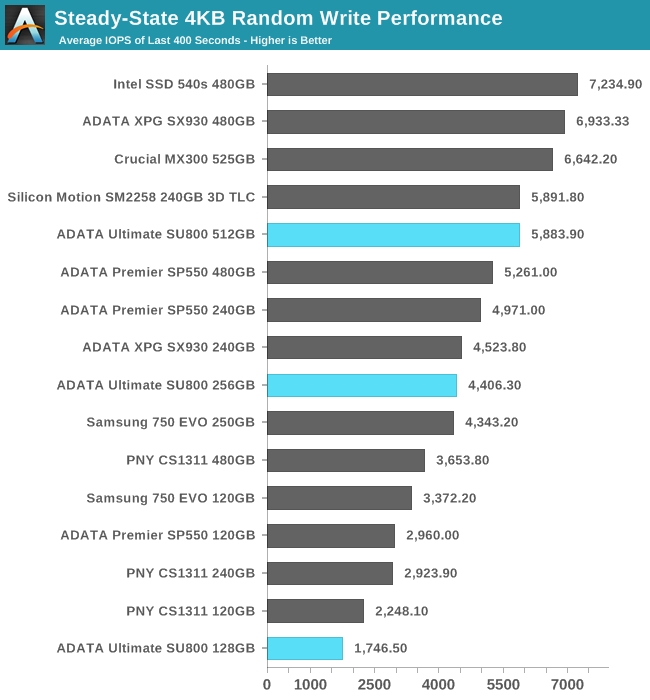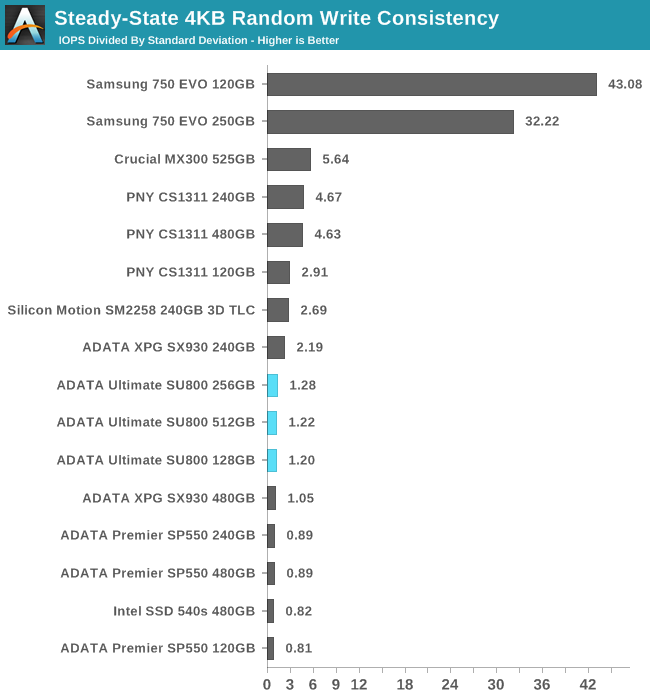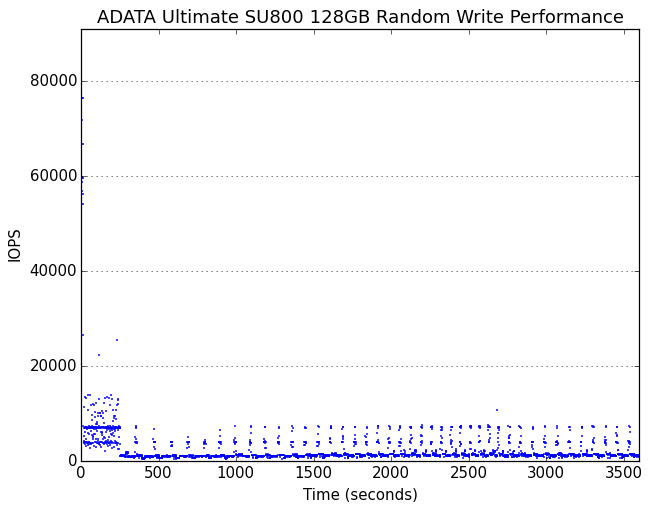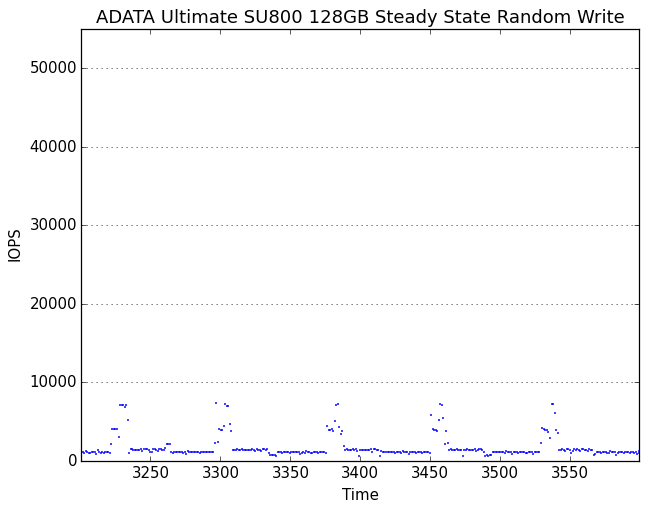The ADATA Ultimate SU800 SSD Review (128GB, 256GB, 512GB)
by Billy Tallis on February 1, 2017 12:01 PM ESTPerformance Consistency
Our performance consistency test explores the extent to which a drive can reliably sustain performance during a long-duration random write test. Specifications for consumer drives typically list peak performance numbers only attainable in ideal conditions. The performance in a worst-case scenario can be drastically different as over the course of a long test drives can run out of spare area, have to start performing garbage collection, and sometimes even reach power or thermal limits.
In addition to an overall decline in performance, a long test can show patterns in how performance varies on shorter timescales. Some drives will exhibit very little variance in performance from second to second, while others will show massive drops in performance during each garbage collection cycle but otherwise maintain good performance, and others show constantly wide variance. If a drive periodically slows to hard drive levels of performance, it may feel slow to use even if its overall average performance is very high.
To maximally stress the drive's controller and force it to perform garbage collection and wear leveling, this test conducts 4kB random writes with a queue depth of 32. The drive is filled before the start of the test, and the test duration is one hour. Any spare area will be exhausted early in the test and by the end of the hour even the largest drives with the most overprovisioning will have reached a steady state. We use the last 400 seconds of the test to score the drive both on steady-state average writes per second and on its performance divided by the standard deviation.

The 512GB ADATA SU800 delivers lower steady-state random write performance than the 525GB Crucial MX300 despite the latter having less built-in overprovisioning. The 256GB SU800 isn't the slowest in its class, but the 128GB is in last place with barely half the performance of the 120GB Samsung 750 EVO. The Silicon Motion engineering sample with more overprovisioning outperformed the SU800 with twice the capacity.

The performance consistency scores from the SU800 are typical for a low-end SSD, but there's clearly room for improvement. Samsung's 750 EVO scores far higher than any of the other budget SSDs, and the Crucial MX300 has the next highest score.
 |
|||||||||
| Default | |||||||||
| 25% Over-Provisioning | |||||||||
For the first few seconds of the test, the SU800 delivers close to the advertised IOPS, then it drops into a fairly typical pattern of widely variable performance above 5k IOPS as it burns through the spare area. Once the SLC cache and spare area are full, the SU800 spends most of its time slowed down by garbage collection, with regular short bursts of higher performance.
 |
|||||||||
| Default | |||||||||
| 25% Over-Provisioning | |||||||||
The garbage collection cycles on the SU800 appear to last about a minute each, separated by several seconds of faster performance. Overall performance and variability are higher for the larger capacities.










35 Comments
View All Comments
lopri - Thursday, February 2, 2017 - link
I kind of mixed SATA interface with mechanical hard drive in the above post. My mistake.Neeson - Thursday, February 2, 2017 - link
I personally use 512GB SU800 now. With the SLC, the read/write performance is excellent. Especially, when I play games, SU800 NEVER slows down. ADATA SU800 can perform pretty well and the price is right. I like it. (Sharing my own experience)lopri - Thursday, February 2, 2017 - link
The drives look like a decent upgrade option for those who are on mechanical drives or earlier generation of SSDs. I like the thorough review as well as the value assessment. Nevertheless the product is a yawner for tech savvy consumers because it has really no distinguishing feature. I guess the actual market price will be the sole determining factor.realbabilu - Friday, February 3, 2017 - link
Any clue entry ssd vs sshd drives. I want to update my laptopjhon1616 - Thursday, December 27, 2018 - link
Adata Su800 512Gb TBW is 400TB if is baaed on same chips of micron that is cruicial mx300 how can be it 400TB since mx300 525gb tbw is 160tb it is very confusing or ADATA JUST CHANGED SPECS THAT IS INVALID